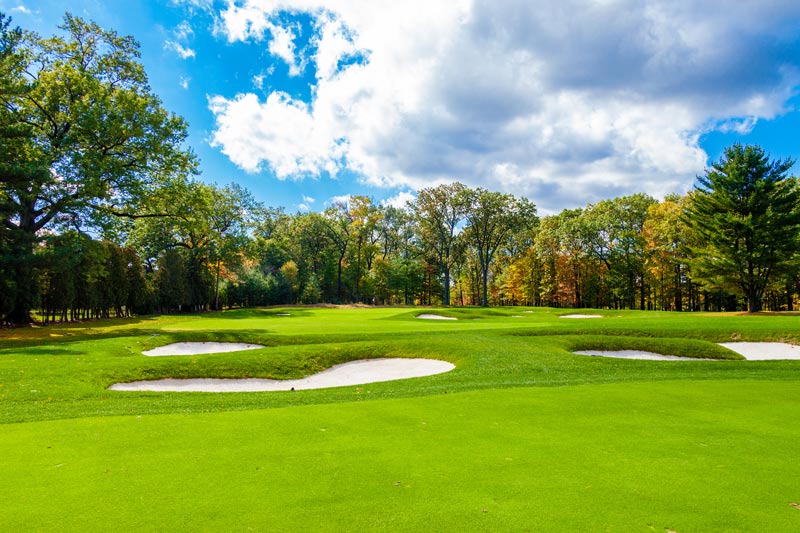
Just what the grass requires: Use of the MLSN guidelines can result in dramatic cost savings and an improved environmental profile, without a loss in turf quality. Photo by James Lum
I don’t eat grass, but my dog, Eli, a 13-year-old Chihuahua-Yorkie mix, does. I think he does it to help settle his stomach, although it often seems to do the opposite.
I do eat products made from wheat, soybeans and corn, though. For farmers growing those crops, yield is critical — it makes or breaks their operations. For turfgrasses, however, yield isn’t measured unless one is growing grass for seed production. The turf manager’s goal is to maintain turf quality, which is collectively assessed as color, leaf texture, shoot density and uniformity.
For many years, nutrition recommendations for turfgrass were based on soil tests that were interpreted just as they would have been for food crops. For example, turf managers who submitted soil samples that tested low in phosphorus were previously told to apply levels that were comparable to the recommendations a farmer would have received to assure high wheat yield.
See the problem?
It’s quite possible that maintaining turf quality doesn’t require the same level of nutrients needed to maximize yield in agronomic crops.
Advances have been made over the past couple of decades in identifying better ways to make recommendations for turf fertilization based on maintaining the quality of the turf, without yield as a factor. One of these is referred to as the Minimum Levels for Sustainable Nutrition, or MLSN.
Larry Stowell, Ph.D., and Wendy Gelernter, Ph.D., with PACE Turf in California teamed up with Micah Woods, Ph.D., scientist with the Asian Turfgrass Center, to develop MLSN guidelines for turfgrass. They started by asking turf managers who were submitting soil for testing to Brookside Laboratories in Ohio to classify the turf area from which the soil was taken as “good,” “average” or “poor.”
Over 17,000 soil tests were done, and only those turf sites that had turf conditions of average or good were considered. In addition, other soil tests were eliminated from consideration if the soil pH or salt content was too high, or if the soils were primarily clay-based with a high cation exchange capacity.
This reduced the number of soil tests that were used for MLSN development to about 3,700. From these, MLSN baseline numbers for pH, phosphorus, potassium, calcium and magnesium were developed and can be found here on the PACE Turf website.
MLSN recommendations have been further refined through development of a model — the Climate Appraisal Form — that allows turf managers using MLSN to adjust nutrient requirements based upon their location in the U.S., whether they’re growing warm- or cool-season grasses, and according to how much nitrogen they apply. Turf situated in areas with longer growing seasons and that receives higher levels of nitrogen will remove more nutrients from the soil, and these factors are considered in this model.
The MLSN model fits well into the low-input strategy that many golf course superintendents have developed to help maintenance costs fit the operating budget. For some, this approach means reducing nitrogen and water applications. Maintaining turf quality but reducing growth can result in other savings, including on labor for mowing and on equipment operation and maintenance.
The work of Stowell, Gelernter and Woods has resulted in a turf quality-targeted procedure — rather than an agronomic crop yield-maximization procedure — for determining nutrient requirements. It was published in GCM in January 2014 and has since been widely employed by turf managers in the U.S. and in other parts of the world as they seek to determine turf nutrient requirements. More soil testing labs are also starting to use MLSN as a guideline for nutrient recommendations.
Grass seed farmers in the Pacific Northwest, ranchers growing grass for forage, and my dog, Eli, who also forages on grass, will have to look beyond MLSN if they’re interested in fertilization requirements that maximize grass seed yield or vegetative growth.
Jack Fry, Ph.D., is a professor of turfgrass science at Kansas State University, currently working at the school’s Research and Extension Center in Olathe, Kan. He is a 23-year educator member of GCSAA.